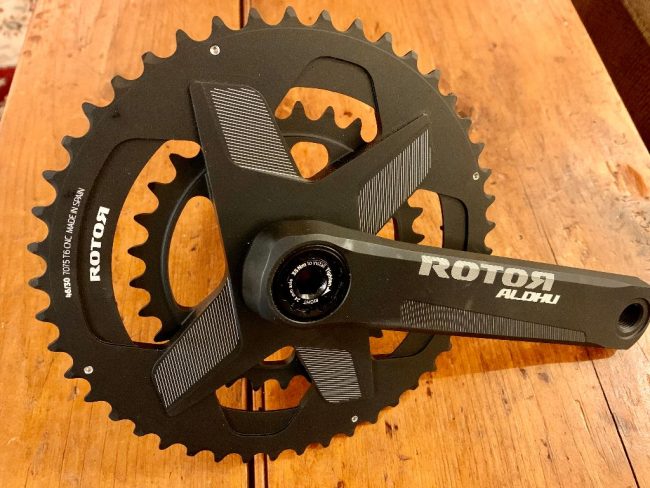Top Road Bicycle Innovations of the Past 20 Years – Compact Cranks & Wide Range Cassettes
Compact Cranks & Wide Range Cassettes

We are biased by our hilly area, but the enhancement that having adequate gearing on your bike offers is hard to overstate. A 53/39 crankset with a 12-25 was considered “low” gearing around twenty years ago. Today, 1:1 is a common starting point for paved road gearing in hilly areas and gravel specific gearing is often a fair amount lower. Compact cranks and wide range cassettes have been instrumental in making a lot more roads and trails accessible to a lot more riders.
While we started to see cassettes with slightly lower gearing come out in the early ‘00’s, it took a surprising amount of time before the derailleur capacity and gearing range many riders wanted was actually produced. It has only been in the past couple years (thank you gravel specific groups and mountain bikes) where readily compatible cassette and derailleur options have been offered in ratios that adequately cover most riders. One would have thought that the downsides of grinding up hills at a 57 cadence would have been addressed much earlier by the bike industry. Thankfully even the hubris of some of the largest companies in the industry was overcome by simple market competition over time on this front.
On the crank side, it could be argued that compact cranks saved road cycling. If nothing else, it helped make it more likely that some of the riders who started to ride because of the enthusiasm surrounding Lance Armstrong kept riding. For others, it helped aging muscles and joints feel a bit younger again.
In hindsight, it was a bit backwards that the compact crank was popularized before the wide range cassette. History can be like that though. In 2003, Tyler Hamilton and other pro riders used compact cranks to win some of the most notoriously challenging climbing days on the Pro Tour. Once pro riders stamped their approval on the concept, it didn’t take long for compact to become mainstream. As this 2005 article in Triathlete Magazine hinted, triple cranks became anachronist in short order.
In more recent years, we have seen mid-compact, sub-compact and gravel cranks all expand gearing options more. In 2000, it would be hard to imagine that a double crankset with a 30 tooth inner ring would be designed by major suppliers (SRAM, Shimano…) specifically to be used with a cassette with a 36 tooth big cog. Yet, that is readily available in the gravel groups of 2022. This being said, there are a number of riders who want broader gearing still and we continue to work on creative solutions for them as the industry continues to slowly develop more options.
What will the next twenty years bring us when it comes to gearing advancements? Will we see internal hub 1x combinations, like what Classified Cycling offers, kill the front derailleur and double crankset on road bikes altogether? Maybe not soon. However, once you ride the system, it is easy to understand how it isn’t an outlandish thought.
Gearing in general is really important to people’s ride experience. We’re glad to see the advancement that has occurred in gearing in the past twenty years, but look forward to even more in the future.
